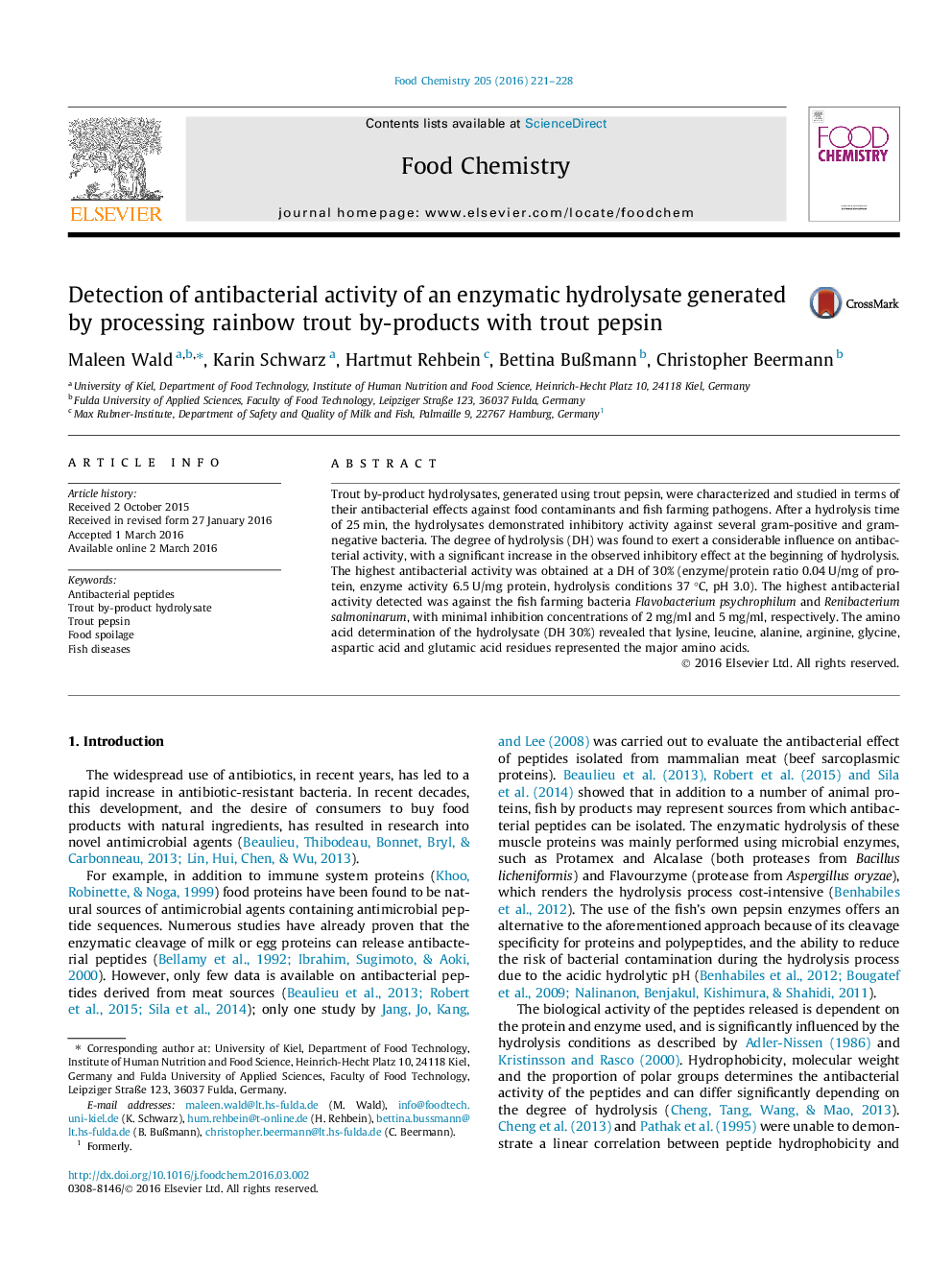| Article ID | Journal | Published Year | Pages | File Type |
|---|---|---|---|---|
| 1183996 | Food Chemistry | 2016 | 8 Pages |
•Trout by-product hydrolysates demonstrated antibacterial activity.•Degree of hydrolysis exert a considerable influence on antibacterial activity.•Inhibitory activity against several bacterial strains demonstrated.•Trout hydrolysates prolonged the lag phase of bacterial growth.
Trout by-product hydrolysates, generated using trout pepsin, were characterized and studied in terms of their antibacterial effects against food contaminants and fish farming pathogens. After a hydrolysis time of 25 min, the hydrolysates demonstrated inhibitory activity against several gram-positive and gram-negative bacteria. The degree of hydrolysis (DH) was found to exert a considerable influence on antibacterial activity, with a significant increase in the observed inhibitory effect at the beginning of hydrolysis. The highest antibacterial activity was obtained at a DH of 30% (enzyme/protein ratio 0.04 U/mg of protein, enzyme activity 6.5 U/mg protein, hydrolysis conditions 37 °C, pH 3.0). The highest antibacterial activity detected was against the fish farming bacteria Flavobacterium psychrophilum and Renibacterium salmoninarum, with minimal inhibition concentrations of 2 mg/ml and 5 mg/ml, respectively. The amino acid determination of the hydrolysate (DH 30%) revealed that lysine, leucine, alanine, arginine, glycine, aspartic acid and glutamic acid residues represented the major amino acids.
